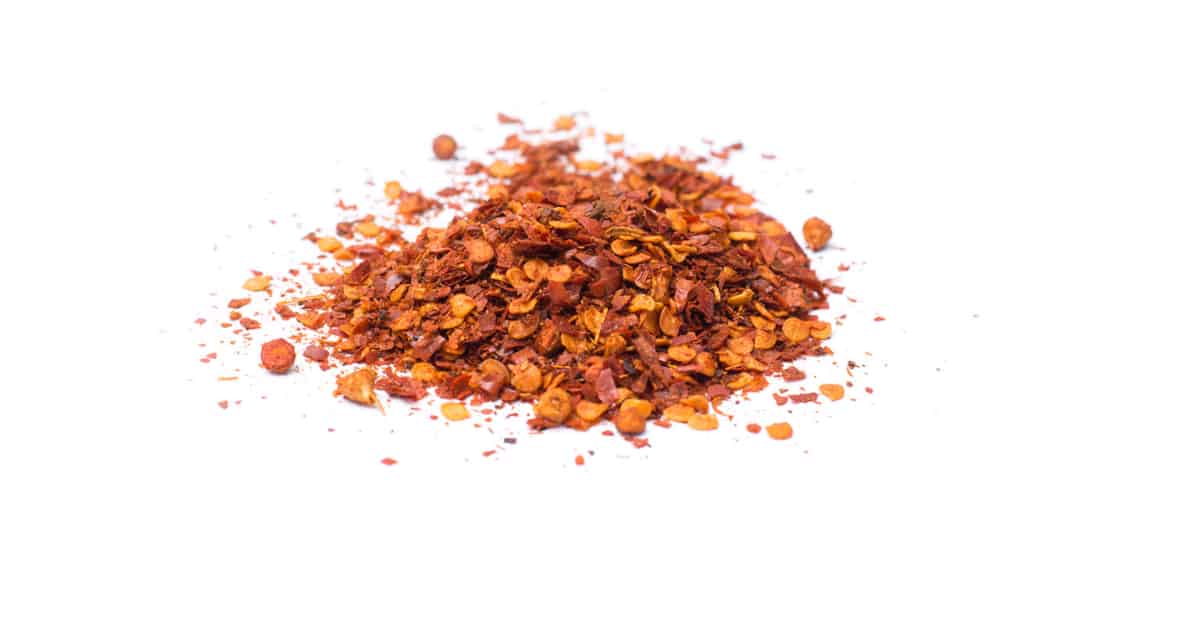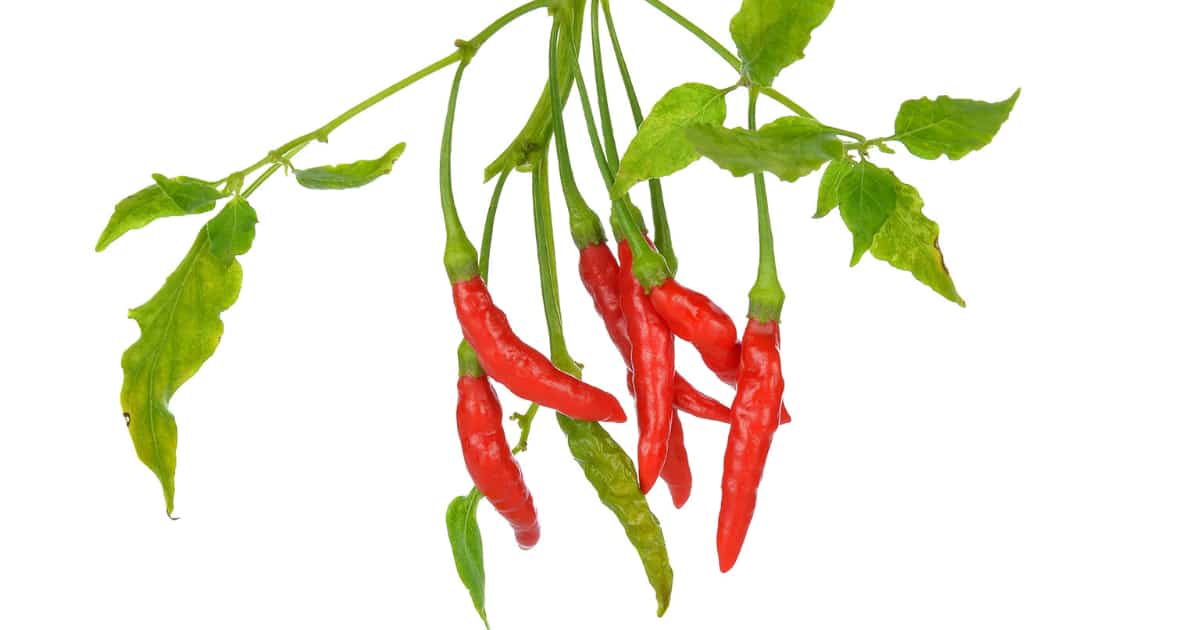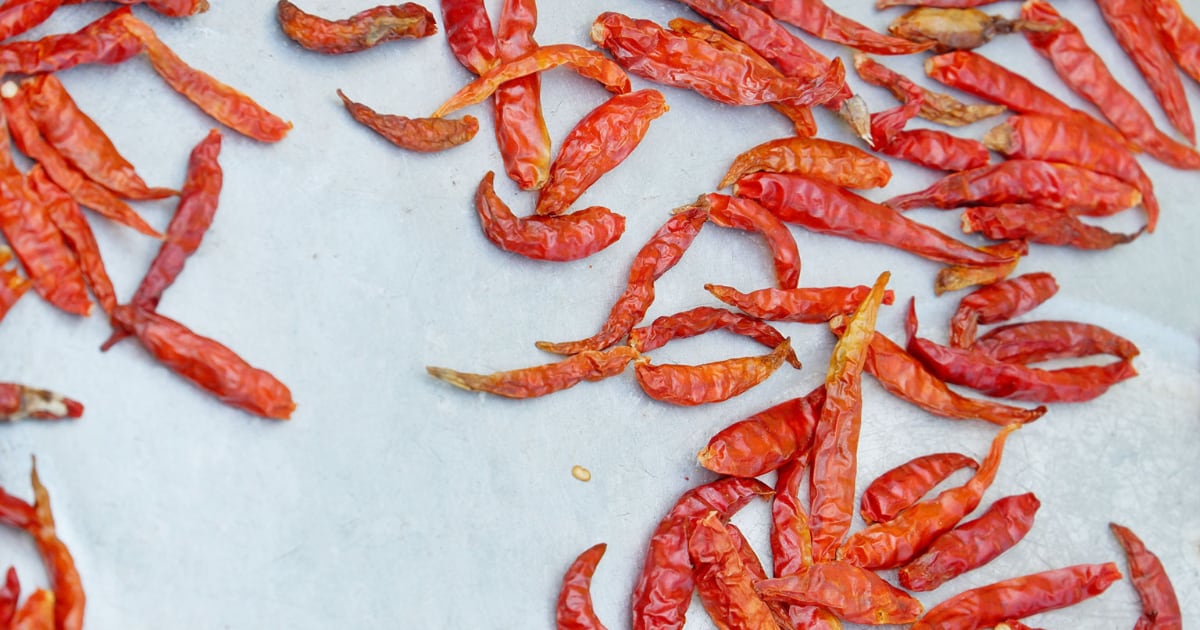Thai chili powder, known as Prik Pon in Thailand, is a versatile and essential ingredient in Thai cuisine. With its fiery kick of heat and bright, fruity flavor, this chili powder transforms the taste of soups, curries, stir-fries, and more.
While store-bought chili powder is convenient, making your own allows you to control the freshness, spice level and tailor it to your taste preferences.

To make authentic Thai chili powder at home, you just need two ingredients - dried red Thai chilies and a little time. The process is simple - de-stem, roast, cool, and grind into a fine powder. But the flavor payoff is huge. When you grind your own, you'll get the exceptional aroma and potent heat of fresh chili powder. It'll blow any store-bought version out of the water.
Gather Your Ingredients for Thai Chili Powder

The best options are small dried red Thai chilies or bird's eye chilies. You can find these specialty chilies at Asian grocery stores or ethnic markets. When buying the dried chilies, inspect them closely and look for ones that are vibrant red in color with stems still intact. This indicates freshness.
About 2 ounces or 1 cup of whole dried red chilies will yield around 1/3 cup of ground chili powder. You may want to buy extra, just in case any get burned during the roasting process. Store unused dried chilies in an airtight container in a cool, dry place for up to a year.
Roast the Chilies to Enhance Flavor
Once you have your dried Thai chilies, the next step is to roast them. This important process helps remove moisture, enhances the flavor, and prevents the chili powder from spoiling quickly after grinding.
- Set your oven to 300°F.
- Arrange the dried chilies in a single layer on a baking sheet lined with parchment paper. Make sure the chilies aren't overlapping.
- Roast for 3-5 minutes, opening the oven every 30 seconds to check on them. You want the chilies to turn a deep, rich red color and become brittle, but take care not to blacken or burn them. Burnt chilies will make the powder taste bitter.
- As soon as the chilies are done roasting, immediately remove them from the oven and allow them to cool completely before grinding. This helps ensure you get a fine, fluffy powder.
Grind the Chilies into a Powder
Once the roasted chilies have cooled, it's time to grind them. You can use a mortar and pestle, coffee grinder, or spice grinder. A blender or food processor also works well.
If using an electric grinder, work in batches and pulse the chilies until you achieve a fine powder with your desired texture. You can make the powder as fine or coarse as you like based on your preference. Some people prefer a more gritty, flaky texture.
When grinding, be cautious of the chili powder dust floating in the air. It can irritate the eyes and lungs. Consider wearing a mask and opening windows or turning on fans to keep the air well circulated.
After grinding, sift the chili powder through a fine mesh sieve to remove any large chunks or pieces that didn't fully grind down.
Store Your Homemade Thai Chili Powder
Transfer the fresh chili powder into an airtight container, like a jar or plastic container with a tight-fitting lid. You can store the powder in a cool, dry place in your pantry for up to 3 months. For longer storage, keep the chili powder in the freezer for up to one year.
When stored properly, homemade Thai chili powder retains its vibrant color and potent spicy flavor much better than store-bought powder.
Adjust the Heat Level to Your Tolerance
One of the best things about making your own Thai chili powder is that you can customize the spiciness. If you're sensitive to heat, try removing the seeds and ribs from the chilies before roasting and grinding. The capsicum heat is concentrated in these interior parts. For a milder powder, you can also incorporate larger, milder dried red chilies into the blend.
As you get accustomed to the spicy kick of homemade chili powder, you can start using more seeds and small hot chilies for extra sizzle. Keep in mind that the smaller the chili, the spicier it will be. Tiny bird's eye chilies pack the most heat.
Enhance Dishes with Homemade Thai Chili Powder
With your homemade Thai chili powder on hand, you can easily add authentic Thai flavor and heat to all sorts of dishes:
- Sprinkle it on eggs, fried rice, or noodles for a quick weeknight meal.
- Use it in marinades and rubs for meat, fish, and veggies.
- Add a pinch to soups, curries, and sauces for extra heat and color.
- Mix with oil and herbs for a fast chili oil dipping sauce.
- Combine with lime juice, fish sauce, and sugar for a tableside chili-lime dressing.
- Put it on the table so family and friends can amp up the spice to their liking.
The uses for homemade Thai chili powder are endless. Because it's so flavorful, you only need to use it a little bit. Start with small amounts, then increase to your desired spiciness. Let your tastebuds be your guide. This versatile powder will add that Thai flavor and fiery kick to all your dishes!
Dried vs. Fresh Thai Chilies: Know the Difference
When following Thai recipes, you'll often see both fresh and dried chilies used. Although similar, these two types of chilies have some notable differences in terms of flavor, spiciness, and how they are used.
Here's what you need to know:
Fresh Thai Chilies
- Bright green, red, or orange in color, depending on ripeness
- Very thin skin with juicy flesh inside
- Imparts fresh, fruity, citrusy flavors
- Typically added raw or freshly chopped
- Heat intensity can vary depending on the type

Dried Red Thai Chilies
- Deep red and wrinkled in appearance
- Dehydrated, so almost all moisture removed
- The nutty, smoky, concentrated chili flavor
- Brittle texture, easily ground to powder
- Heat levels are always intense
While fresh chilies are often used sliced or chopped in dishes, dried chilies are more frequently toasted and ground into chili powder or flakes. So in a recipe, don't substitute one for the other. The flavor and spiciness won't be the same.
Add Heat with Chili Powder or Chili Paste
Beyond standalone chili powder, pastes made from chilies are common ingredients in Thai cooking.
Here are two chili-based staples to know:
Prik Pon Chili Powder - This chili powder gets its extra kick from using fried chilies. The chilies are fried in oil before grinding, creating a very intensely hot and flavorful powder.
Nam Prik Chili Paste - Nam Prik is a prepared chili paste made by pounding fresh or dried chilies together with herbs, garlic, shallots, lime, and fish sauce. It comes in a range of heat levels and imparts instant flavor.
Both chili powder and chili paste are Thai pantry essentials. They can transform a basic dish into something bold and dynamic. When a recipe calls for heat, don't be afraid to turn up the spice level with chili products. You want your food to have that addictive Thai chili kick!
Control the Burn with These Tips
Thai chilies pack serious heat, but there are some ways to temper the burn:
- Remove seeds and ribs before using - this is where most of the spicy capsaicin oil is concentrated.
- Soak chilies in water briefly; drain and pat dry before cooking. This mellows raw heat.
- Opt for larger, milder varieties of chilies rather than tiny bird's eye.
- Add chili in stages, allowing the heat to build gradually in a dish rather than hitting it all at once.
- Balance chili heat by including cooling ingredients like coconut milk, mint, cucumber, and lime.
- Keep white rice, yogurt sauce, or hard-boiled eggs on hand to help tame the fire.
With these tricks, you can still enjoy the amazing flavor of Thai chilies without having to completely numb your tastebuds after each bite. Adjust recipes based on your personal heat preferences.
Roast First for Full Flavor
Toasting or roasting chilies before use is common in Thai cooking:
- Removes moisture for better grinding and longer shelf life
- Intensifies the flavor by caramelizing natural sugars
- Adds a subtle smoky taste that enhances other ingredients
- Allows the heat to permeate the chili more thoroughly
Try oven-roasting dried chilies at 300°F for 3-5 minutes until fragrant and brittle. Or quickly toast whole fresh chilies in a dry pan over medium-high heat until softened with charred spots. Roasted chilies infuse sauces, pastes, and powders with incredible depth and chili essence.
FAQ
What's the best way to roast chilies for chili powder?
The oven is ideal for getting even, consistent roasting. Spread the dried chilies in a single layer on a baking sheet and roast at 300°F for 3-5 minutes. Check frequently and remove them once they darken in color and become brittle. Avoid burnt spots.
Can I use a food processor or blender to grind the chili powder?
Yes, an electric grinder or blender works great to grind the chilies into powder. Just work in small batches and pulse to your desired texture. Be cautious of chili dust in the air, irritating eyes, and lungs.
How can I reduce the heat level of homemade chili powder?
Removing the seeds and membranes inside the chilies before roasting will significantly reduce the heat. You can also incorporate larger, milder dried chile varieties into the blend.
What are some ways to use Thai chili powder in dishes?
Sprinkle it in fried rice, omelets, noodle soup, and curry. Use it in marinades and sauces. Put it on the table for guests to add their desired spiciness. The possibilities are endless!
Is it safe to touch chilies with bare hands when making chili powder?
It's best to wear gloves when handling chilies to avoid skin irritation. Avoid touching your eyes, and wash your hands immediately after handling. If you have sensitive skin, take extra precautions when working with raw chilies.
Can I substitute chili paste or chili flakes for chili powder?
Not directly. Chili paste and flakes have different textures and intensity, so the flavor won't be the same. Each chili product adds its own unique qualities.
How should I store homemade chili powder?
In an airtight container in a cool, dry place for up to 3 months. For longer storage, refrigerate or freeze the powder for up to 1 year. Keep away from light, air, and moisture to maintain freshness.
What dried chili varieties can I use to make powder?
Small red Thai bird's eye, arbol, Japones, ancho, chipotle, and New Mexico are all good options. Mix varietals for complexity, or use just one type to highlight its unique flavor.
Can I use both fresh and dried chilies in the same dish?
Absolutely! Fresh and dried chilies each contribute different qualities, so using both creates depth and contrast. Just adjust the ratio based on the dish and your heat preference.
Conclusion
From curries to dipping sauces, no Thai dish is complete without a touch of chili heat. Homemade Thai chili powder allows you to customize that spice factor perfectly to your tastes while enjoying the incredible flavor of freshly ground chili.
To make your own, just remember - to source high-quality dried red Thai or bird's eye chilies, roast briefly to intensify the flavor, rest, and grind into a fine powder. Play with different chili varieties and adjust the seeds to control the burn.
Now that you have this chili powder knowledge, you can expertly use it in all your Thai cooking. Liven up basic fried rice, sprinkle it on noodles, blend it into sauces, and more. The possibilities are endless when you have homemade chili powder on hand. It takes your Thai recipes to the next level of authenticity and flavor.

